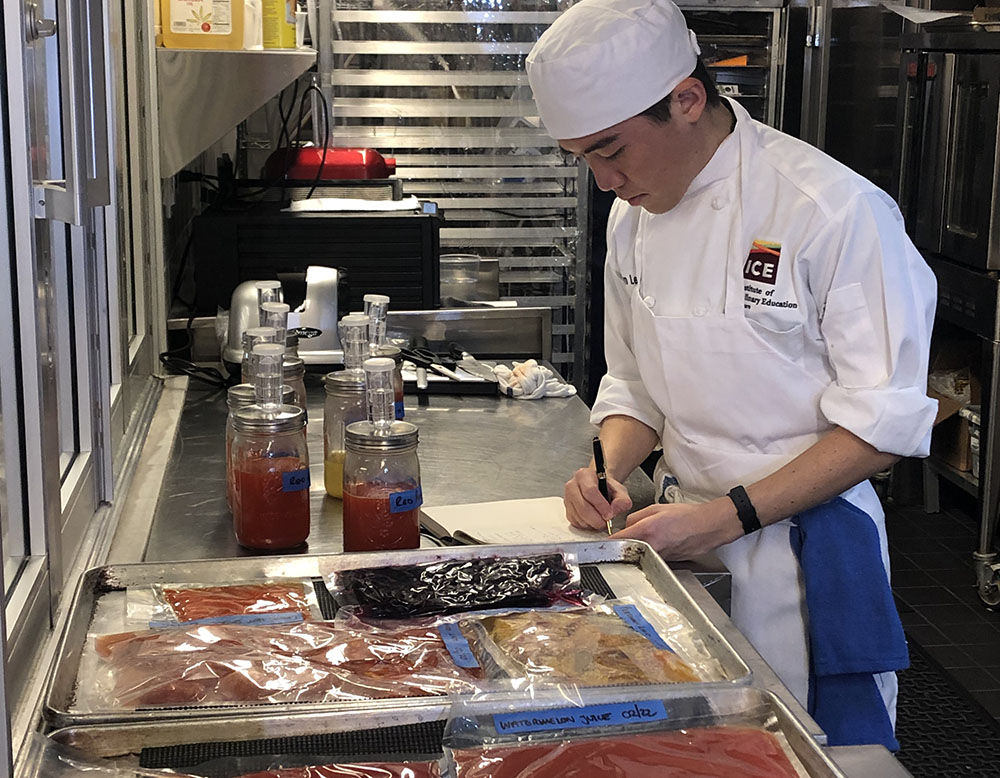Through this project, we wanted to explore the possibilities of producing vinegars from various fruits and vegetables and then experiment with the resulting ingredients to design dishes that highlight each vinegar’s unique traits. Before going into the specifics of the project, however, it is best to understand a few basic concepts behind fermenting foods in general.
Fermented foods can be considered either alcoholic or lactic acid. These groups are determined by the product of fermentation, ethanol (alcohol) for the alcoholic and organic acids (often lactic acid) for the lactic acid. Both types of fermentation require two primary components, a sugar supply and a bacterial culture; alcohol fermentations use forms of yeast, while lactic acid fermentation normally relies on lactic acid bacteria. Additionally, the environment used to house the fermenting food must be of a suitable temperature, moisture and pH for the bacteria to successfully survive; the environment also normally lacks oxygen, though special cases of aerobic fermentation do exist.
From here it is easy to categorize commonly fermented foods. Drinking alcohol (beer, wine, spirits, etc.) all rely on alcoholic fermentation in some way. Dairy, vegetable and starch-based fermented foods normally use lactic acid fermentation as their main pathway; yogurt, kimchi and miso are common examples of this.
One important note about making vinegar is that it is one of the few ingredients where fermentation isn’t used as the final production step. Vinegar’s characteristic component is acetic acid, which is responsible for vinegar’s strong sour taste as well as it’s functional abilities in tenderizing mixtures. Certain types of bacteria are added to alcohols to convert ethanol to acetic acid (ethanoic acid). These organisms are different than those used for fermentation, as the presence of oxygen is mandatory for this step. After this step, the concentration of acetic acid may be too high, so the vinegar will be diluted as needed.

To prepare the first set of trials, we decided to use watermelon, tomato, red bell pepper and persimmon juices, sweetened with caster sugar as needed; we also used brown sugar and honey in extra juices after filling the first jars. We then inoculated the juices with bacteria commonly used in wine and will leave them to ferment in jars for roughly a week. If the bacteria successfully convert all sugars to alcohol, we will proceed to the next step to produce acetic acid; if not, we will look over the protocols, make corrections as needed and try again.
The project is expected to take two to three months for vinegar production alone, so we are looking at a minimal six-month endeavor. Fermentation is a process that tests the patience and determination of those trying to carry it out, but as an aspiring food scientist, it’s just another concept that I am pursuing to learn what I can, before helping discover what can be.
Stay tuned for the first results and see more from ICE's culinary research.


